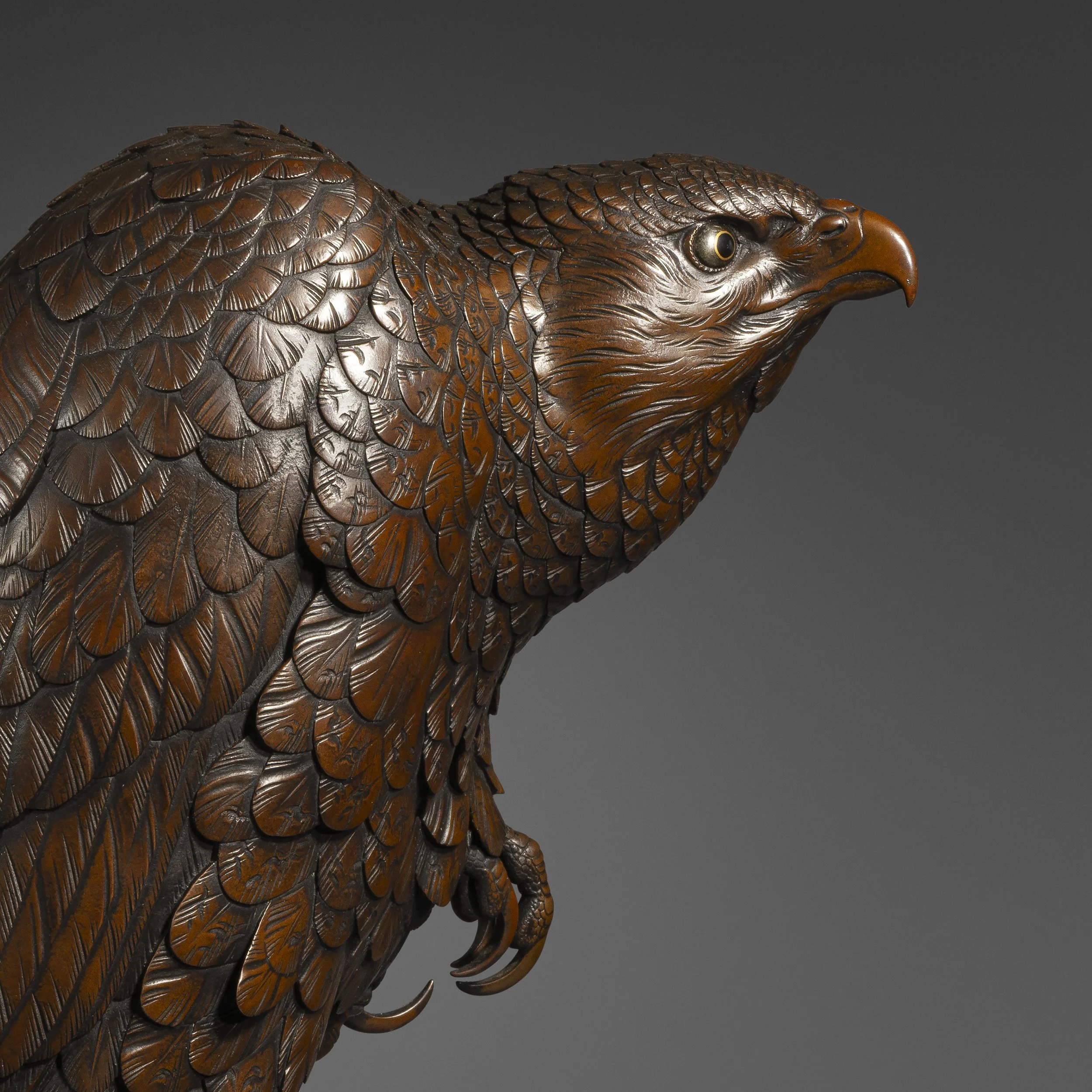FEATURED ITEM - MASAAKI BRONZE HAWK
A bronze study of a hawk perched on one leg, its head turned intently to one side in a moment of keen observation. The bird stands upon a bronze perch cast in relief with dragons and butterflies, raised on four out-swept feet decorated with stylised waves.
Signed with Chiselled signature Masaaki
Height: 66 cm
Meiji period, circa 1890
The sculptor has captured the hawk with remarkable naturalism, demonstrating an intimate knowledge of the live bird's anatomy and characteristic poses. Every aspect reveals careful observation: the precisely rendered individual feathers, the alert intensity of the eyes (worked with details of shakudo, shibuichi and gold), the powerful grip of the talons and the taut muscularity beneath the plumage. The closed wings are arranged with one carefully and just slightly folded over the other in the natural manner of a resting bird of prey. When viewed from a distance, the bronze achieves a convincing life-likeness. Upon closer examination, the meticulous detail of the feather work and the exquisite modelling of the eyes reveal the exceptional skill of the maker.
Although the artist cannot be definitively identified, the figure bears a striking resemblance to one of ‘The Twelve Japanese Falcons Cast in Bronze’ created by Suzuki Chokichi for exhibition at the World's Columbian Exposition in Chicago in 1893 (see below).
The falcon in question (No. 4, executed in Platinous Shibuichi) adopts the same pose, perched on one foot with wings contracted. Chokichi was celebrated in the Meiji period as an expert in carving birds, so much so that he was referred to as ‘Falcons Chokichi‘. His well renowned Twelve Falcons represented the Japanese feudal tradition whereby the forty-eight hawk-breeding districts annually procured sixty falcons for the officers of the Tokugawa Princes' Falconry, from which the twelve strongest and swiftest were selected as hunting birds for the Shogun. Chokichi devoted four years to this ambitious project, keeping several live falcons throughout to study their every movement and action.
The present hawk demonstrates similar mastery in its life-like proportions and characteristic features; the pointed beak, keen eyes and sharp talons that made these raptors the terror of smaller birds are all faithfully represented. The graceful arrangement of the plumage when viewed from any side further attests to the sculptor's understanding of avian anatomy. However, while Chokichi's twelve falcons were mounted on black lacquered perches decorated with damask, the present example features a beautifully worked bronze stand with scaly dragons climbing up and down the central pillar, adding a dynamic sculptural element that complements the poised naturalism of the hawk above.






